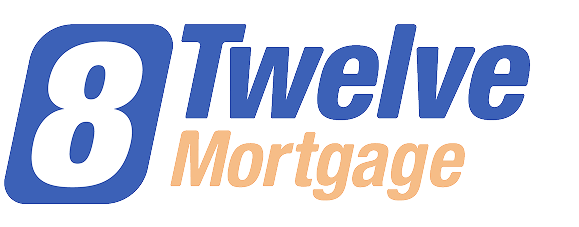
Summary
- Refinancing is settling your current mortgage loan and obtaining a new one, often with new terms and interest rates.
- Expect to pay 2%-5% of your mortgage loan’s principal, plus application and appraisal fees for refinancing.
- Canadians refinance loans to access lower interest rates, receive cash from home equity, or adjust mortgage terms.
Mortgage Refinancing 101: What It Is, How It Works & Why It Matters
Have you ever considered asking for a raise at work? Maybe you don’t score a salary increase, but you can cash out your options or negotiate more vacation time.
In the same vein, you might seek a completely new compensation package — and job — with another company.
Refinancing your mortgage is similar. Maybe your property has broader horizons than your existing loan. Perhaps lower interest rates shine in another lender’s offerings. Or your home equity is brimming with opportunity for a renovation.
Today, we’ll walk you through how refinancing works and why you might consider it for your home.
What is refinancing?
Refinancing is replacing your existing mortgage loan with a new one, either with the same lender or a different one. Ideally, your new, refinanced loan will lower your monthly payment (specifically, interest) or bring you cash through home equity.
Refinanced loans usually have revised terms or rates. A lender might pay off your existing loan and give you a new one with a term that’s five years shorter.
Perhaps that increases your monthly payment, but it lessens your overall interest. Similarly, your new loan might have lower interest rates, directly decreasing your monthly payment.
How much does refinancing cost?
Lower interest and home equity cash sound great at first — but refinancing isn’t always so clean-cut. No lender will say goodbye to a loan’s high-interest rate without taking a slice of the pie before their exit.
That slice usually looks like a prepayment charge, which is a percentage-based fee off your home’s value, usually between 2%-5%. You’ll need to talk to specific lenders for exact figures. In the interim, simply Google “prepayment charge + mortgage lender” to access lender-specific calculators for estimates. For example, RBC’s prepayment charge is three months of interest, with a few other caveats.
On top of that, prepare for an application fee, title search, and appraisal costs. Your job is to determine if refinancing savings are worth the implementation to put it in motion.
What do you need to be eligible for refinancing?
The refinancing process is quite similar to your original mortgage application. And you won’t be approved on the sole basis of your home’s value.
Even if the new loan is with the same lender, they’ll likely require you to resubmit updated documents from your original mortgage. This includes:
- Pay stubs and income documents
- Tax returns and T4s
- Employment letters
- Credit score and report
- Personal details
7 reasons to refinance
Does a mortgage refinance loan make sense for you? Keep reading to learn how refinancing could support your financial goals. We’ll separate our refinance objectives under two main goals: refinancing to change mortgage terms and refinancing to cash out equity.
Refinance to change mortgage terms
Fees may apply! But this is a financially savvy motive behind refinancing a mortgage. Lowering your monthly payment, or lowering your overall interest is the key goal to this strategy. Here’s what to consider:
- Lower interest rates: Yes, please! This is the most common reason for refinancing a mortgage loan. In fact, Canada’s record-low rates in 2020 sparked a sharp increase in refinancing. Now, in late 2022, the tables have turned. With increasing rates, Canadians aren’t refinancing as much these days. Nonetheless, experts still see value in refinancing — it’s a cheaper way to access large amounts of cash than most loan types. More on that in a sec.
- Shorter or longer amortization period: Say your current loan’s amortization period is 25 years. A $500,000 mortgage means your monthly payment is about $1,667 (without interest). If you lengthen the period to 30 years, your principal payment drops to about $1,389. However, you’ll tack on an extra five years of interest payments. Some homeowners might decide on a shorter amortization period to pay off their debt faster or pay less overall interest, even if it means a higher monthly payment.
- Switch from variable to fixed: Fixed mortgage rates are locked in for an agreed-upon term. Variable rates move up and down with the market — a costly choice in 2022. Switching to different mortgage types can help you save hundreds of dollars on your monthly payment. Just ensure you speak with your mortgage advisor to understand what scenario is best suited for you.
- Eliminating mortgage insurance: Home equity works serious magic on your lenders. Appreciated value translates to a surplus of funds, which could mean enough for a 20% down payment. If you could only put down 5% or 10%, you likely had to pay mortgage insurance every month. Refinancing can help you become an eligible borrower without mortgage insurance.
Refinance to cash out
Tapping into your home equity (refinancing) is a great way to secure thousands of dollars in a short period. Say your home appreciates by $200,000 in value (previously worth $600,000, now worth $800,000).
Most lenders will pay out 80% of the home’s value in refinancing. Meaning? A $640,000 payout gives you ample cash to pay off your old mortgage and set aside funds for other financial goals.
But homeowner, beware. Cash-out refinancing will bring you deeper into debt — you’ll have to pay it back eventually.
Of course, certain actions are very warranted for this approach. For example, a renovation will improve your home’s value; A paid-off, high-interest debt will save you money in the long run. But unless you rent out a renovated basement or find another way to secure extra income, your debt increases while your monthly budget stays the same.
Here’s how people typically use a cash-out mortgage refinance:
- Renovations: Structural repairs, kitchen revamps, and new flooring can make up some of your highest expenses as a homeowner.
- Debt consolidation: Not all debts are equal. If you’ve ever struggled with piling credit card debt, you know how quickly interest can take over. That’s because a 19.99% interest rate on a credit card is significantly higher than the rate on your average line of credit or mortgage. If you have a ton of high-interest debt, refinancing helps you use equity to settle them.
- Down payment on another property: If you can use home equity to eliminate mortgage insurance and consolidate debt, you can use it for a new down payment. This is a fabulous way to eliminate the painful, years-long grinding period to secure a down payment in the GTA. But remember — using home equity to purchase a new home can skyrocket your debt-to-income ratio.





